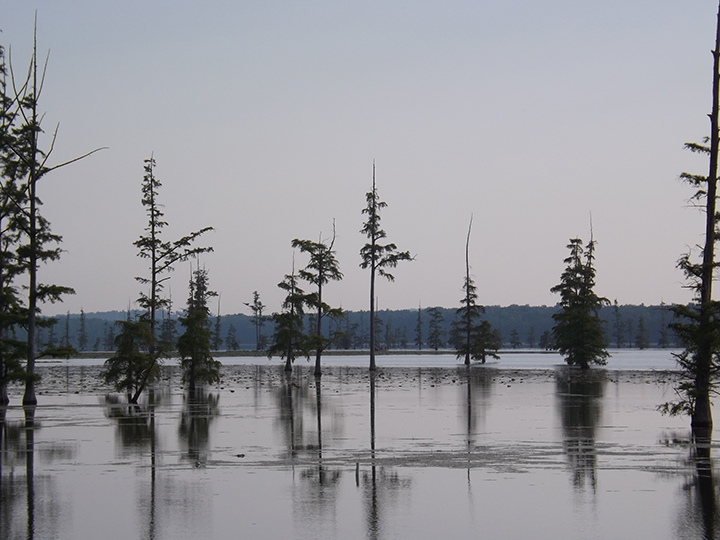The first time my parents took me to Mingo National Wildlife Refuge, I was nine months old. We camped in the back of my dad’s pickup truck under his camper shell in Duck Creek, the state park that borders Mingo. The truck was lined with sleeping bags, and my parents used a laundry basket padded with blankets as a portable crib for me. We have camped at Duck Creek many times since then on our trips to Mingo, and now the five of us all sleep in our full size van when we go. We stay up late walking around duck creek as we look for sleeping fish, ghost shrimp and frogs. At night the chorus of frog calls is almost deafening.
The thrill of driving through Mingo and seeing the beauty of wildlife will never leave me. The cypress trees send their roots, or “knees,” out of the soil so they just peek out of the murky water. Since there isn’t much under growth you can see deep into the swamp, even during the summer.
Wildlife is everywhere. Frogs sit on top of lily pads with solid white flowers. Many species of birds, insects, mammals and reptiles inhabit the trees and marsh, and thanks to my parents, I can easily identify most during our trips to Mingo.
My family and I enjoy taking the scenic route on our drive south. Mingo is near Puxico, Missouri and Lake Wappapello, about 100 miles south of St. Genevieve. We prefer to visit Mingo in the spring and fall when the employees raise the water level using manually-operated locks and dams. Migrating birds and waterfowl use the park’s flooded land as a resting place during their flight south. Snakes slither across roadways on their way to and from their dens during these seasons as well. After a long hibernation, these cold-blooded snakes are very sluggish until they have absorbed heat by laying in the sun.
When we arrive, we pay the three-dollar entrance fee and drive down to the Visitor Center on Bluff Road. The Visitor Center contains a variety of displays showing the history of Mingo Swamp and the Mississippi floodplain, as well as diagrams that describe the wildlife and conservation efforts in the swamp. Conservation efforts aim to provide habitats for all of the area’s endangered wildlife, especially rare species like the western mud snake. These snakes only live in freshwater swamps where they feed on amphiumas, which are aquatic salamanders only found in cypress swamps.
As we drive on the roads and walk along the ditches and trails in Mingo, my favorite things to is to look for wildlife. A few years ago, we saw a species of heron called an American bittern, as it paused and tried to camouflage itself among the knee-high marsh grass between the Visitor Center and the spillway. The spillway is where the refuge’s watershed flows into the Mingo River, including its creeks and ditches. To my surprise, during that trip we spotted the bittern every time we passed that area. It didn’t mind us stopping, rolling down the windows and taking pictures and using our binoculars to get a better look.
A different year, we came to Mingo when the marsh and land on both sides of the road were flooded. We saw several white-tailed deer standing and laying among big boulders on the bluff to avoid the water. We also saw schools of spawning buffalo carp, huge flocks of American coots, and all three species of egrets. Every time we go to Mingo, my family and I see animals we haven’t seen before or notice new animal behavior, such as deer laying on the bluffs or bitterns stalking fish in the marsh grass.
Learn what other wildlife you can find at Mingo National Wildlife Refuge in Detours Magazine online.
